Nestled in the lush landscape of Puerto Rico, El Yunque National Forest stands as a beacon of natural beauty and biodiversity. Here you can discover a unique blend of adventure and tranquility. Nature lovers from all over the world eagerly explore its rich ecosystems and photogenic scenery!
What to know:
- El Yunque is the only tropical rainforest in the U.S. National Forest System.
- There’s no shortage of activities. Try hiking, zip-lining, and wildlife observation.
- To have the time of your life, it’s best to understand the weather there.
Mind-Blowing Biodiversity
El Yunque isn’t any forest; it’s a vibrant ecosystem teeming with life. Here you’ll find hundreds of unique species, some of which are found nowhere else on the planet! If you love to observe wildlife, a trip into this rainforest is an unparalleled opportunity. Bird watchers scramble to catch a glimpse of the rare Puerto Rican parrot, and you’ll never forget the tiny coquí frog’s distinctive chirp once you hear it!
The landscape is diverse. You can explore everything from mountainous regions to waterfalls and streams. New discoveries await you around each lush corner of every trail, from towering ferns to hidden orchids. Don’t forget the camera!
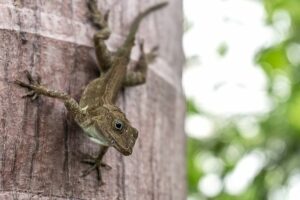
Weather Patterns and Planning Your Visit to El Yunque National Forest
When planning a trip to El Yunque, understanding the local weather patterns is essential. The forest is known for its rainfall, which nourishes the rich vegetation and lush greenery. But it is a rainforest, after all, and that means rain is quite common. The weather can change in a flash. The best times to visit are typically during the drier months from December to April, when there is less rainfall and clearer paths.
Despite the potential for wet conditions, the rain adds a magical element to the forest. Mist can be seen hanging over the mountains, creating ethereal views and dazzling you at nature’s beauty. Make sure to bring appropriate clothing and gear that can get damp so that your visit is as comfortable and enjoyable as possible. This way, you can immerse yourself fully in the natural beauty of El Yunque.
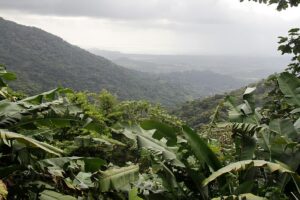
Adventures in El Yunque National Forest
Adrenaline junkies to the front of the line! The El Yunque zip line is among the most thrilling experiences. Gliding over the treetops, you’re given an unforgettable view of the forest’s canopy. Feel the rush of the wind! It’s a must-do for thrill-seekers.
Hiking is quite popular. Scenic routes are available for any skill level. The trail to La Mina Falls leads to one of the forest’s most beautiful waterfalls. Be prepared to take a dip in the natural pool at the base!
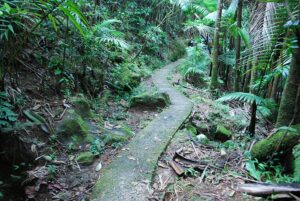
Wildlife Wonders of El Yunque National Forest
El Yunque is a vibrant canvas painted with the diverse colors of its wildlife. Home to an array of unique species, the forest is a sanctuary for those who thrive in its lush, humid environment. Among the most enchanting El Yunque National Forest animals are the Puerto Rican Parrot, a vivid symbol of resilience, and the elusive coquí frog, whose evening serenades are as iconic as the forest itself. These creatures not only add to the forest’s mystique but also play crucial roles in its ecological balance, making a visit here a peek into nature’s intricately woven tapestry.
Are you afraid of snakes? As you venture through the dense foliage, you might spot the Puerto Rican boa constrictor. Or maybe you’ll catch a glimpse of the tiny anoles that dart through the undergrowth. Observing these animals in their natural habitat offers a rare glimpse into the raw beauty of wildlife conservation in action. For nature enthusiasts and photographers alike, the forest provides a dynamic landscape teeming with life, each trail offering delightful encounters with the wild residents of this rainforest.

The Enigmatic Flora of El Yunque National Forest
El Yunque is not just a haven for wildlife, it’s a botanical treasure trove, too. As you wander through the lush greenery, you’ll feel like you’re flipping through a living library of exotic plants. Many species are endemic to Puerto Rico. The forest floor is draped in a tapestry of ferns and orchids, with the towering sierra palms swaying like gentle giants in the humid breeze. This verdant paradise is a botanist’s (and nature lover’s) dream, offering a unique glimpse into the diverse plant life that thrives in the tropical climate of El Yunque.
The forest’s high humidity and frequent rainfall contribute to its rich biodiversity. The dense canopy and moist undergrowth create an ideal environment for a variety of ferns and epiphytes, adding layers upon layers of greenery that enchant the senses. For those keen on understanding how El Yunque national forest weather influences its flora, a walk through this emerald wonderland provides all the answers. Each leaf and petal tells a story of survival and adaptation in one of the most enchanting rainforests on Earth.

Discovering the Charms of La Mina Falls
La Mina Falls, nestled deep within El Yunque National Forest, presents a breathtaking spectacle that encapsulates the essence of the forest’s serene beauty. The journey to the falls is as mesmerizing as the destination itself, with paths lined by towering ferns and echoing with the symphony of local birdcalls. As one of the top things to do in El Yunque National Forest, a visit to La Mina Falls offers a refreshing retreat from the tropical heat, where the cascading waters create a natural pool perfect for a rejuvenating dip.
The area around La Mina Falls also serves as an ideal spot for picnics and relaxation, with accessible trails ensuring that everyone, regardless of their hiking proficiency, can enjoy the enchanting views. The falls are not just a scenic stop but also a cultural touchstone, often featured in local lore and inspiring many artists and photographers who visit. Whether you’re looking to cool off after a hike or simply soak in the tranquil atmosphere, La Mina Falls promises a memorable addition to any El Yunque itinerary.
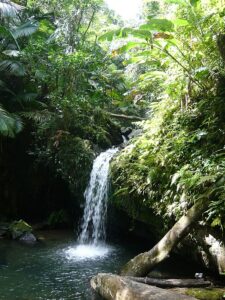
The Mystical Atmosphere of La Mina Falls
La Mina casts its spell on you immediately. You’ll be dazzled by its serene beauty and the sounds of cascading waters. As you trek towards the falls, the gentle rustle of leaves and the steady rhythm of the river accompany you, setting a tranquil soundtrack to your journey. This natural music enhances the mystical vibe, making you feel just like you’re stepping into a living fairy tale.
The area is as a natural amphitheater, where the whispers of the ancient forest mix with the waterfall’s roar. The mist that dances through the air catches the sunlight, creating ephemeral rainbows that vanish as quickly as they come. This visual and auditory spectacle provides a perfect backdrop for introspection or a peaceful break during your hike. It’s these moments of natural harmony that make La Mina Falls not just a destination, but an experience, weaving a tapestry of unforgettable memories.
Its Role in Local Legends
La Mina Falls isn’t just a cascade of beauty. It’s a fountain of stories, deeply woven into the fabric of local folklore. Imagine the tales that have rippled through the lush greenery of El Yunque. Locals speak of ancient spirits and forest guardians that converge around the falls. They are believed to protect the sacred purity of this place. These stories aren’t just bedtime tales. They’re a testament to the cultural reverence and mystical aura that La Mina Falls holds on La Isla Encanta.
Diving deeper into these legends, one can’t help but feel a connection to the past. It’s as if the mist from the falls carries whispers from previous centuries, allowing you to witness a glimpse into the soul of El Yunque. This mystical connection invites travelers not just to observe, but to experience a profound sense of peace and tranquility. As you stand by the roaring waters, it’s easy to see why these tales are still told today. They reveal the secret that La Mina Falls is not only as a natural retreat, but a spiritual sanctuary as well.

The Historical Significance of La Mina Falls
La Mina Falls isn’t just a stunning backdrop for photographs. It’s a site steeped in history and local lore. Nestled deep within El Yunque National Forest, these falls have been a gathering spot for centuries. Originally used by the indigenous Taíno people, the area surrounding La Mina Falls served as a communal place for rituals and daily activities. Today, the falls attract visitors from around the globe, drawn not only by their beauty but by the whispers of history that echo off the cascading waters.
Visiting La Mina Falls offers more than just a visual feast. It’s an opportunity to connect with the past. As you trek along the well-worn paths to the falls, imagine the generations of people who have walked this route before you. The sound of the rushing water blends with the echoes of history, creating a profound sense of connection to both nature and the ancestors of this land. This historical perspective enriches the experience, making a visit to La Mina Falls a deeper, more reflective journey.

The Unique Ecosystems Surrounding La Mina Falls
The area around the falls is a living mosaic of lush ferns, towering bamboo stands, and rare orchids, each thriving in the moist, misty air generated by the cascading waters. This microclimate supports an array of species that are adapted to the cool, humid environment, making it a crucial area for biodiversity conservation.
The ecosystems here are a natural laboratory for scientists and researchers. The distinct ecological conditions allow experts to study environmental resilience and adaptation strategies of flora and fauna. This research not only helps in understanding the complexities of tropical ecosystems but also aids in developing strategies for preserving such fragile environments against the threats of climate change and human interference.
The Impact on Local Water Resources
La Mina Falls plays a pivotal role in the hydrology of El Yunque National Forest. The falls contribute significantly to the regulation of the water cycle within the forest, acting as a vital source of fresh water for the rivers and streams that weave through the landscape. This continuous flow ensures that ecosystems downstream receive a steady supply of water, which is essential for maintaining habitat quality and supporting aquatic life.
The presence of La Mina Falls also influences local water quality. As water cascades over rocks and vegetation, it naturally filters impurities, helping to maintain the clarity and cleanliness of the water systems in El Yunque. This natural filtration process is crucial for the health of the communities that rely on these water sources for drinking, agriculture, and recreation, underscoring the falls’ integral role in sustaining both ecological and human life in the region.
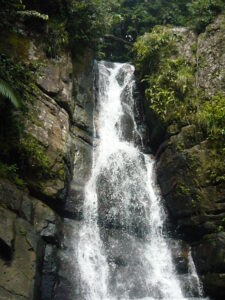
A Photographic Paradise
For photography enthusiasts and professionals alike, La Mina Falls offers a canvas like no other. The dynamic range of lighting, combined with the rich greens of the surrounding foliage and the stark white rush of the waterfall, creates a photographer’s paradise. Whether you’re aiming to capture the grandeur of the falls in a wide shot or the intricate details of the water droplets in a macro view, La Mina provides ample opportunities to experiment with composition and exposure.
The changing light throughout the day offers various moods and atmospheres to capture, from the soft glow of early morning to the dramatic shadows of late afternoon. Seasonal changes also bring a different palette to the scenery, with lush, vibrant greens in the wet season and deeper, earthier tones during the drier months. Each visit to La Mina Falls can yield a completely unique set of images, encouraging photographers to return time and again to capture its evolving beauty. What a magnificent place to learn the art of photography!
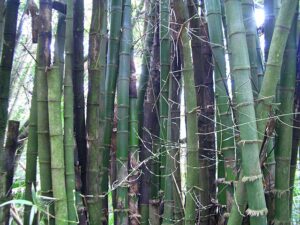
Ecotourism Impact Around La Mina Falls
Ecotourism has blossomed around La Mina Falls, turning it into a beacon for sustainable travel. The influx of nature enthusiasts keen to explore El Yunque National Forest has spurred local initiatives focused on preserving the delicate balance of this ecosystem. By engaging in responsible tourism practices, visitors contribute to the conservation efforts that keep the forest vibrant. This includes guided tours that emphasize the importance of leaving no trace and supporting local businesses that practice sustainability.
Moreover, the economic impact of ecotourism in this region is significant. It provides jobs and a steady income for local communities, fostering a symbiotic relationship between nature and economic development. This model of tourism not only helps in maintaining the ecological integrity of La Mina Falls but also ensures that the benefits ripple through the community. As more travelers seek authentic, environmentally conscious experiences, La Mina Falls stands as a shining example of how tourism can be a force for good, both ecologically and economically.
Conservation Efforts and Ecological Importance
El Yunque National Forest is not only a hub for tourism and recreation but also a critical site for conservation efforts. As a protected area, the forest serves as a sanctuary for many species that are endangered or at risk. Conservation programs focus on habitat preservation, research, and the reintroduction of native species, such as the Puerto Rican parrot, which has faced threats from habitat loss and hurricanes.
The ecological role of El Yunque extends beyond its boundaries. The forest contributes to the island’s water supply, with its rivers and streams feeding into larger bodies of water used by local communities. This makes the forest a key player in Puerto Rico’s ecological health and sustainability, emphasizing the importance of ongoing conservation efforts.
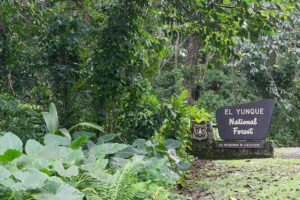
Connecting with Culture and Community
El Yunque National Forest is deeply intertwined with the cultural heritage of Puerto Rico. For centuries, the forest has been a part of local traditions and stories. Today, it continues to be a place where visitors can connect with the island’s culture through guided tours led by local experts who share tales of the forest’s history and its significance to the people of Puerto Rico.
The forest also supports local communities through eco-tourism, which provides jobs and promotes sustainable practices. By visiting El Yunque, tourists contribute to the local economy and help foster a relationship between the forest and the people who live near it. This symbiotic relationship highlights the importance of preserving natural spaces, not only for their ecological benefits but also for their cultural and economic contributions.
Summary
El Yunque National Forest in Puerto Rico is a prime example of nature’s splendor, offering everything from thrilling adventures like zip-lining to tranquil moments beneath waterfall-fed pools. Its role as a biodiversity hotspot and a conservation area underscores its global ecological importance. By visiting El Yunque, travelers not only experience its beauty but also contribute to the preservation and appreciation of this unique environment.
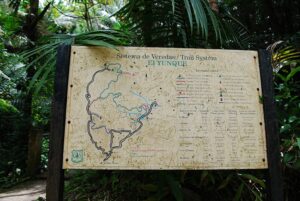
FAQ
What is the best time of year to visit El Yunque National Forest?
The best time to visit El Yunque is during the drier months from December to April, when rainfall is less frequent and the trails are more accessible.
Are there any facilities available in El Yunque National Forest?
Yes, El Yunque National Forest offers visitor centers, restrooms, picnic areas, and clearly marked trails. Facilities are designed to enhance the visitor experience while promoting conservation.
Can I participate in guided tours of El Yunque National Forest?
Yes, guided tours are available and are a great way to learn about the forest’s ecosystem, history, and the conservation efforts in place. These tours are often led by knowledgeable local guides who provide insightful and culturally rich experiences.
This sounds amazing! Where can I learn more?
Start here: https://www.fs.usda.gov/elyunque.
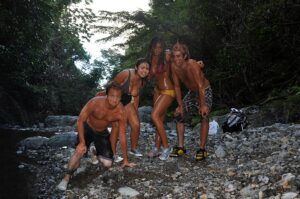
Creative Commons Attributions:
Jami430, CC BY-SA 4.0, via Wikimedia Commons
Jami430, CC BY-SA 4.0, via Wikimedia Commons
https://www.flickr.com/people/trawin/, CC BY-SA 2.0, via Wikimedia Commons
Bjoertvedt, CC BY-SA 4.0, via Wikimedia Commons
U.S. Fish and Wildlife Service Southeast Region, CC BY 2.0, via Wikimedia Commons
Gordon Tarpley, CC BY 2.0, via Wikimedia Commons
Šarūnas Burdulis, CC BY-SA 2.0, via Wikimedia Commons
Gruepig, CC BY-SA 4.0, via Wikimedia Commons
Shannon McGee, CC BY-SA 2.0, via Wikimedia Commons
Anthonyvideo, CC BY 3.0, via Wikimedia Commons
EgorovaSvetlana, CC BY-SA 4.0, via Wikimedia Commons
EgorovaSvetlana, CC BY-SA 4.0, via Wikimedia Commons
Clembore Memotech, CC BY-SA 2.0, via Wikimedia Commons
Gordon Tarpley, CC BY 2.0, via Wikimedia Commons
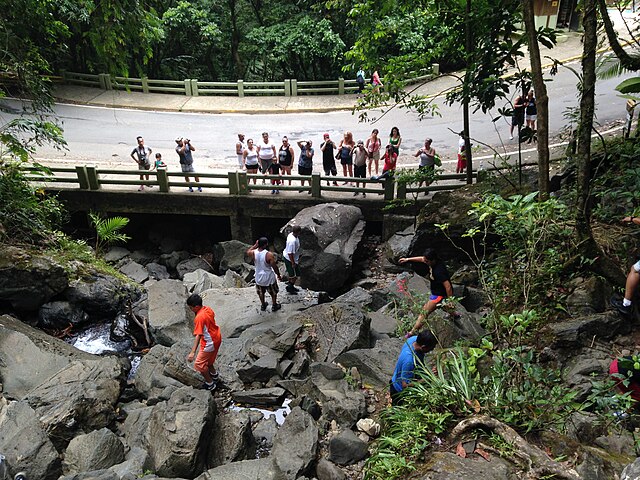
Leave a Reply